Physiotherapy in Redcliffe for Cycling
Welcome to My Health Team's Stretching Guide for Cycling.
Stretching is an essential part of successful cycling. A good stretching routine can help to minimize muscle imbalances, prevent injury and improve your cycling performance. The following stretching program is designed for cyclists who do not have any current injuries or individual stretching needs. If you have an injury, or a specific mechanical imbalance that may be holding back your cycling performance, your My Health Team physiotherapist can design a stretching program just for you.
When is the Best Time to Stretch?
When your muscles are warm and relaxed! If you take your performance seriously, stretch after your 5-10 minute warm up (low intensity cycling) and after you cycle. If you are more of a leisurely cyclist you may prefer to stretch when you stop for a break rather than after your warm-up, especially during longer cycling trips, then stretch again after cycling. Competitive cycling is a dynamic sport so you'll need both dynamic and static stretching. Dynamic stretches form part of your pre-ride or pre-race warm-up. Static stretches can be included at the end of your cool down or at other times to improve your overall fitness. Road racers will have different demands than downhill mountain bikers and will need to tailor their dynamic warm up according to the demands of their sport.
Pre-ride/ pre-race:
- General warm up (5-10 minutes). The aim of a general warm-up is to get the blood flowing to all parts of the body used during cycling, especially the cardiovascular system. A cycling warm-up will usually involve an on-road light ride or a steady spin on a stationary trainer.
- Dynamic stretching. Gradually the speed and intensity of cycling is increased. Off the bike, this may involve dynamic torso twists, jumps, and lunges.
- Technical and speed warm up. This includes high intensity, cycling specific drills. Mountain bike drills for speed and agility should be kept short with recovery time between drills to ensure you are not fatigued before your race. Road racers may complete short hills, or flat road attack/sprint drills.
Post-ride/ post-race:
- Cool down. A cool down allows the body, in particular the cardiovascular system, to gradually return to its resting state. A cool-down reduces your chances of becoming dizzy or faint after exercise, allows any waste such as lactic acid that has built up during exercise to dissipate and may reduce your chance of having Delayed Onset Muscle Soreness (DOMS). Cool down by gradually reducing your intensity of cycling for about 5 minutes.This time may be shorter for sprinters and downhill riders, and much longer for distance cyclists.
- Static stretches. Commence your stretching regime directly after a short cool-down, before the muscles have cooled completely.
Rules for Dynamic Stretching:
- Warm up your muscles first, then stretch while your muscles are still warm.
- Move through your range of movement, keeping control of the movement with your muscles.
- Do not allow momentum to control the movement by "flinging" or "throwing" your body parts around.
- You may feel light resistance in your muscles, but you should never feel pain during a stretch.
- Start with slow, low intensity movements, and gradually progress to full-speed, race-like movements (particularly for technical downhill mountain bikers).
Rules for Static Stretching:
- Warm up the muscles first.
- Slowly take your muscles to the end of their range. You will feel slight resistance in the muscle, but you should never feel pain during a stretch.
- Hold the stretch in a static position. Do not bounce.
- Hold each stretch for 20 seconds. Repeat each stretch 3-4 times.
Essential Stretches for Cycling:
Recreational cyclists may only need to stretch the "prime movers" of cycling - your big leg and buttock muscles. Competitive cyclists and any cyclists riding for extended periods will want to add back, chest and arm stretches to relieve the muscles that work to stabilize your cycling position. Stretch these muscles each time you cycle and don't forget to stretch both sides. The complete stretch program shown below will take about 16 minutes to complete.
Calf Stretch (Gastrocnemius)
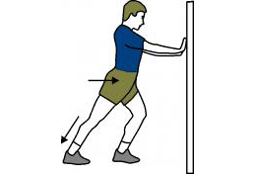
Quadriceps Stretch
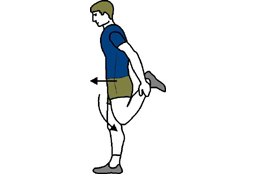
Hamstring Stretch
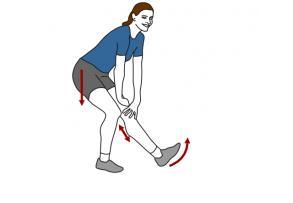
Hip Flexor Stretch
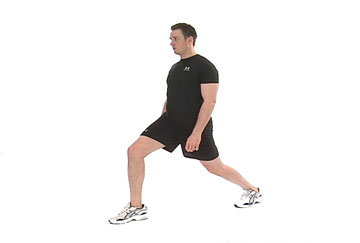
ITB Stretch
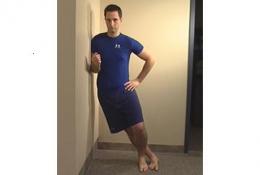
Gluteal Stretch

Back Stretch (Extension)
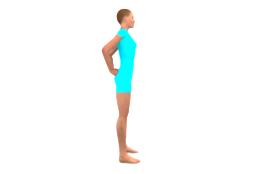
Anterior Shoulder Stretch
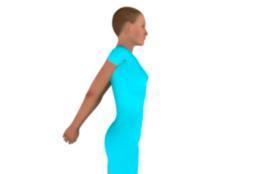
Wrist Flexor Stretch
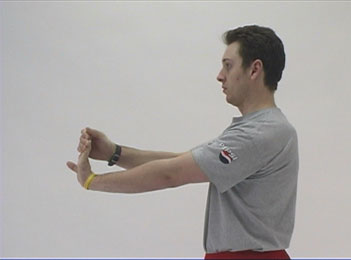
 Get Immediate Access To Your Special Report And Top Tips From Our PTs!
Get Immediate Access To Your Special Report And Top Tips From Our PTs!


